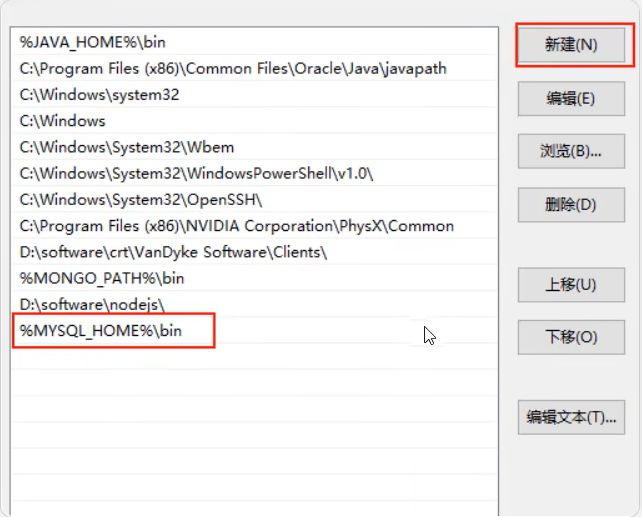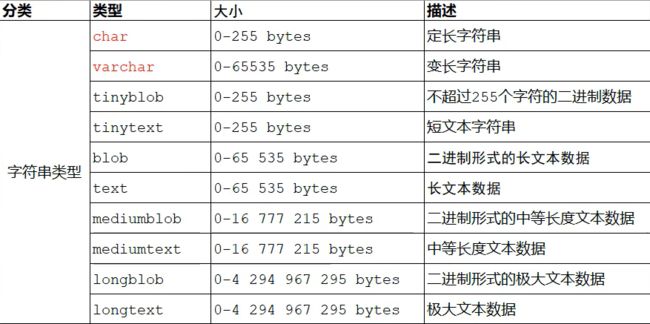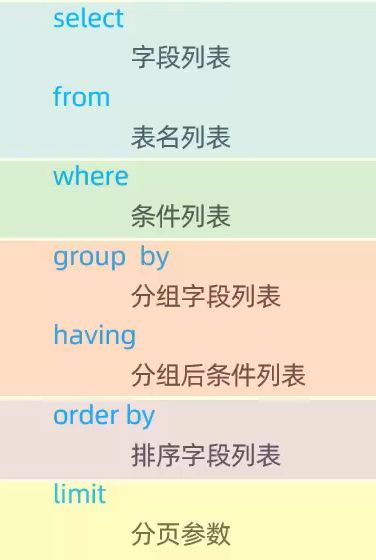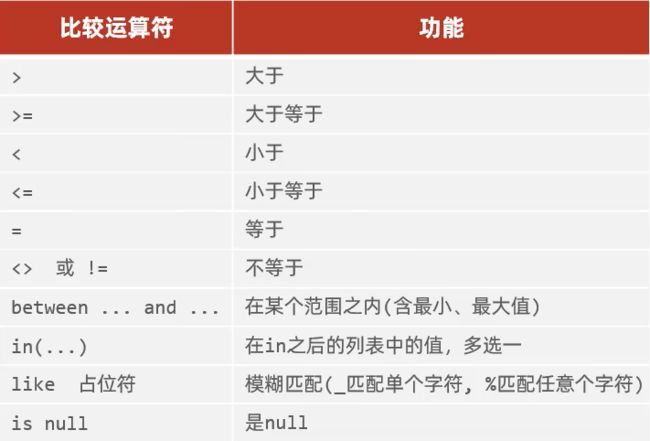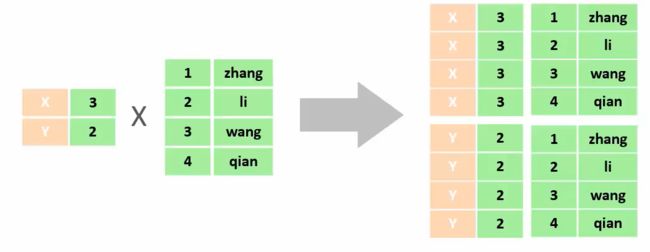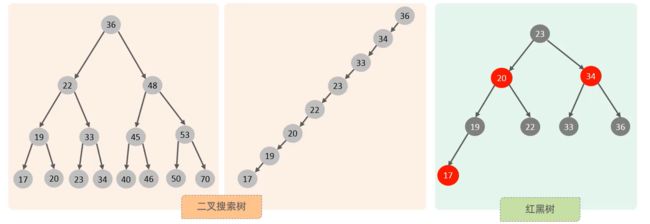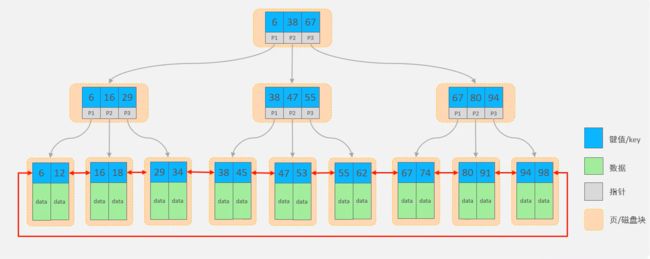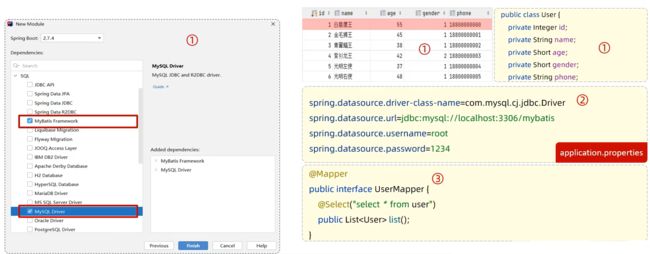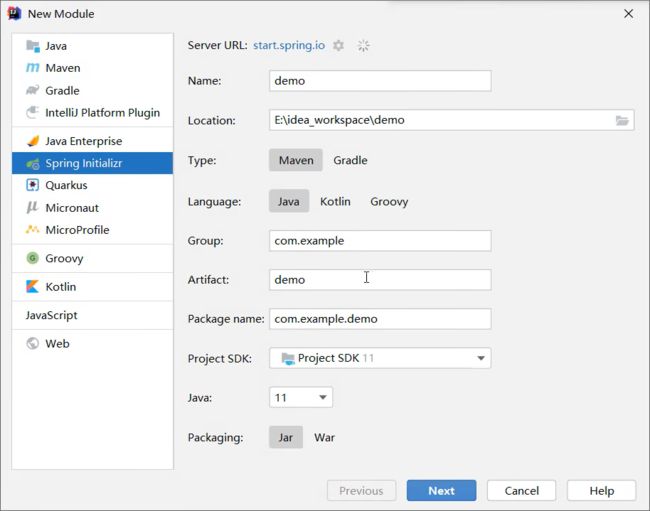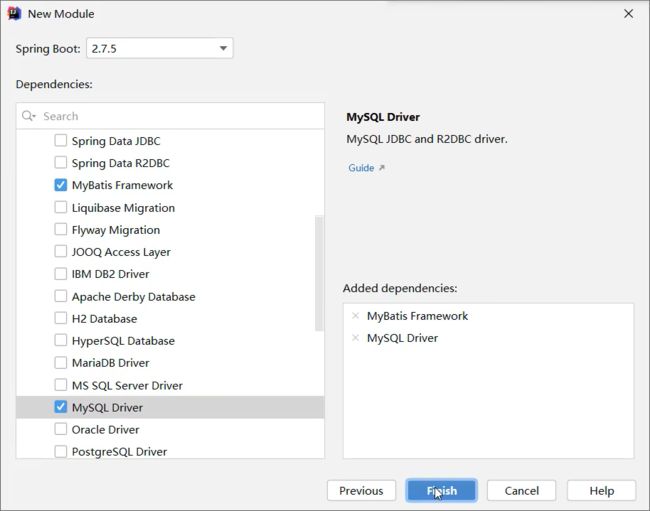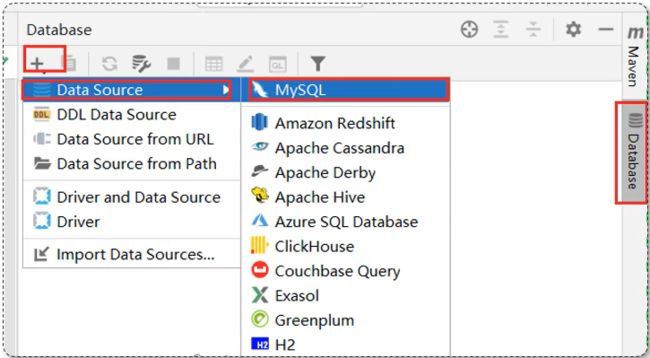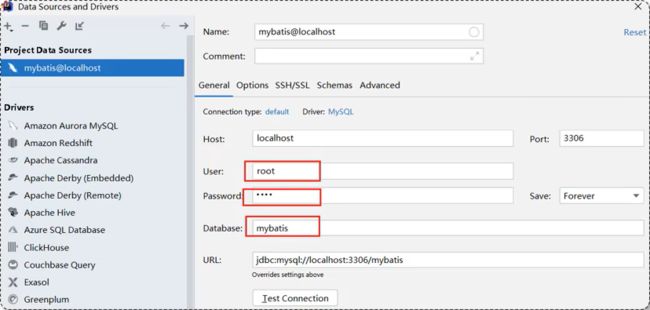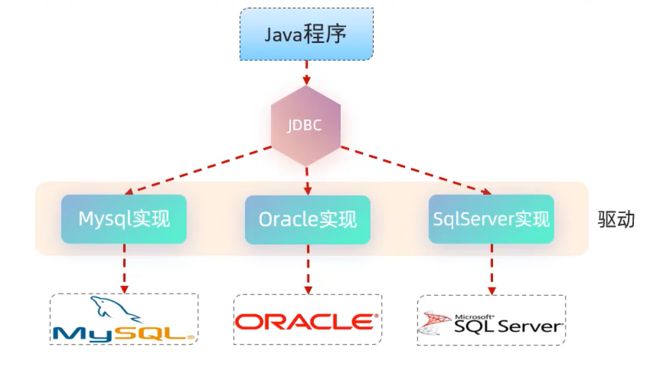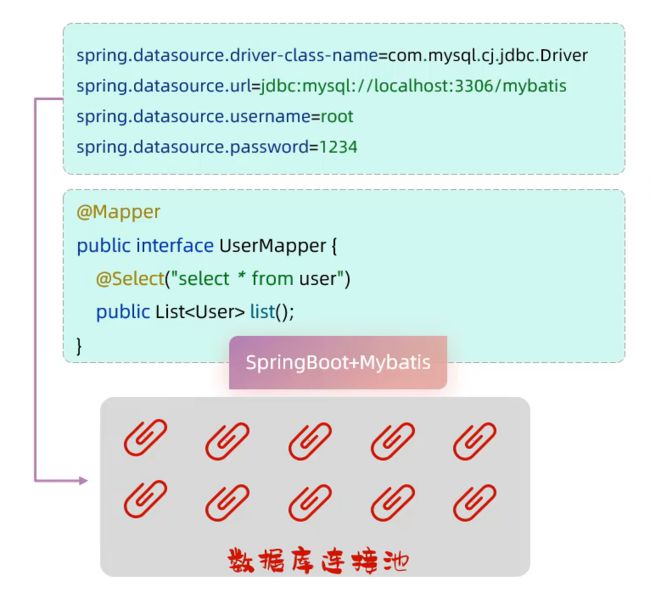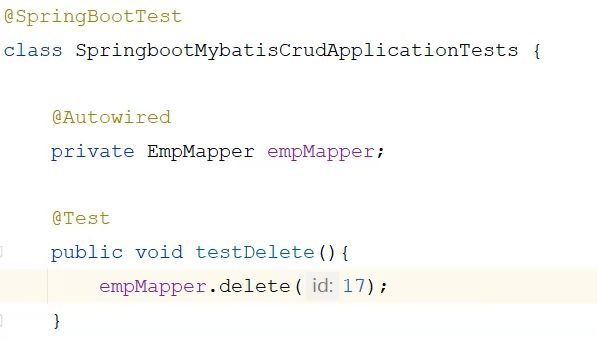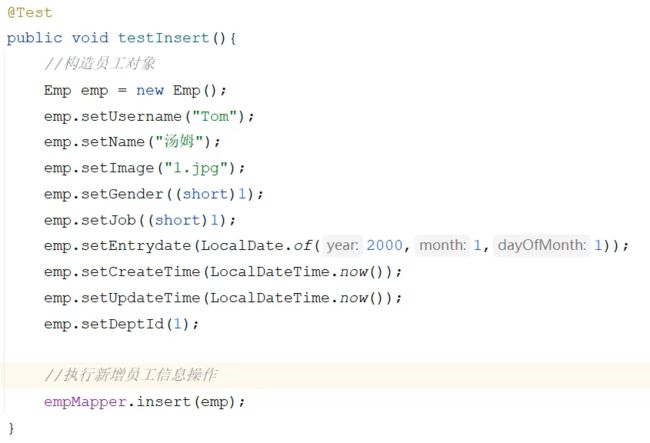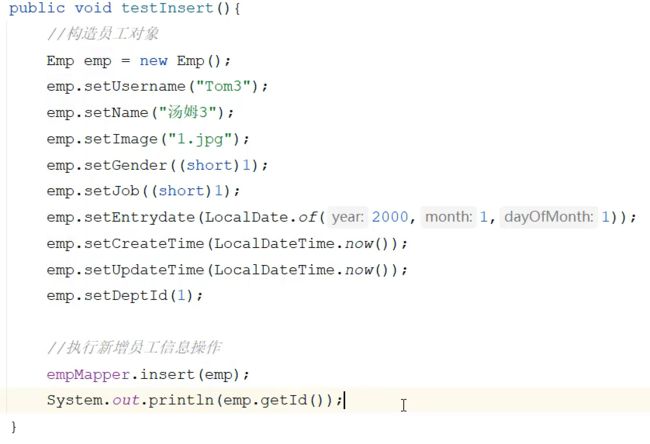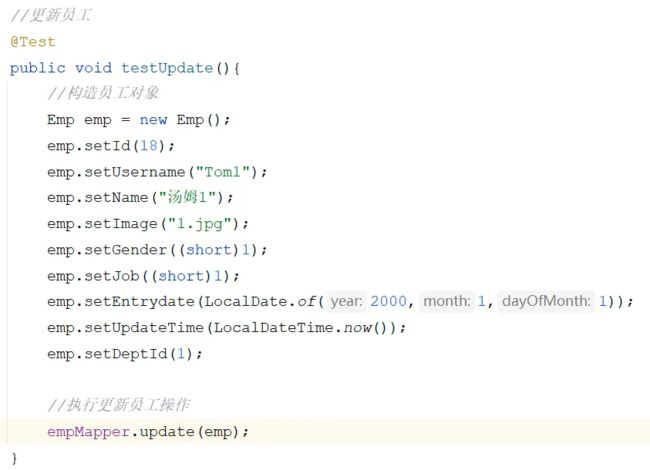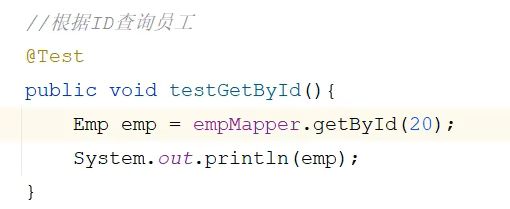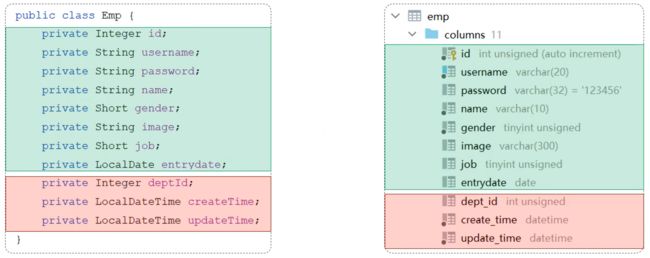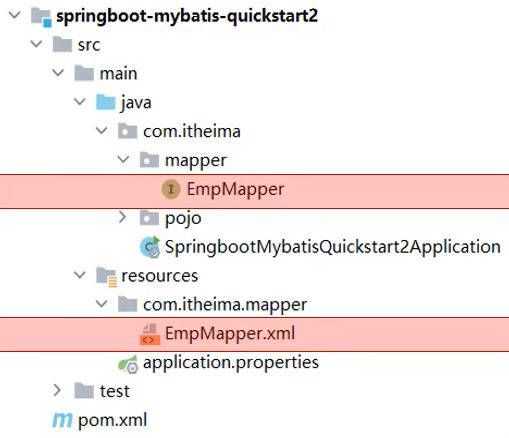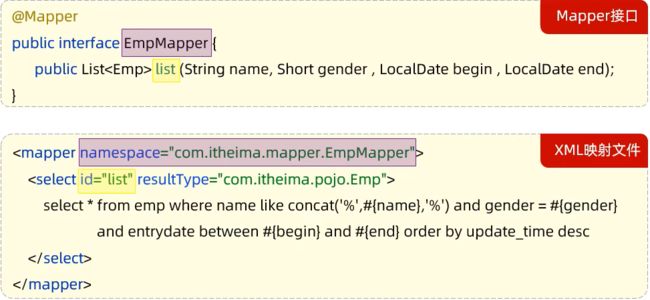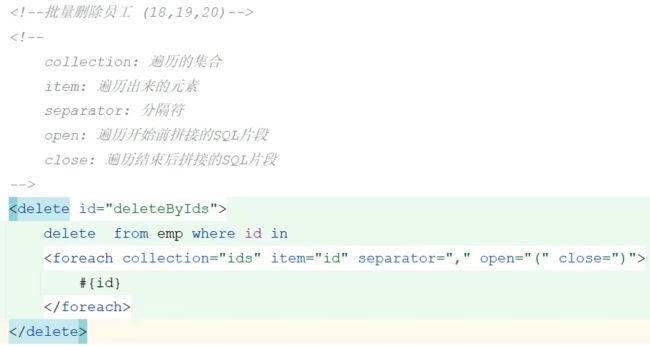【JavaWeb】后端(MySQL+Mybatis)
目录
-
- 一、MySQL
-
- 1.什么是数据库?
- 2.MySQL安装
- 3.MySQL连接
- 二、DDL
-
- 1.DDL(数据库操作)
- 2.MySQL客户端工具
- 3.表操作
- 4.数据类型
- 5.表操作
- 三、DML
-
- 1.INSERT
- 2.UODATE
- 3.DELETE
- 四、DQL
-
- 1.基本查询
- 2.条件查询(where)
- 3.分组查询(group by)
- 4.排序查询(order by)
- 5.分页查询(limit)
- 五、多表设计
-
- 1.一对多
- 2.一对一
- 3.多对多
- 六、多表查询
-
- 1.内连接
- 2.外连接
- 3.子查询
-
- 1)标量子查询
- 2)列子查询
- 3)行子查询
- 4)表子查询
- 七、事务
-
- 1.介绍
- 2.事务控制
- 3.四大特性/ACID
- 八、索引
-
- 1.介绍
- 2.优缺点
- 3.结构
- 4.语法
- 九、Mybatis
-
- 1.介绍
- 2.入门
- 3.配置SQL提示
- 4.JDBC介绍
- 5.数据库连接池
- 6.lombok
- 十、Mybatis增删改查(CRUD)
-
- 1.删除操作
- 2.日志输出
- 3.预编译SQL
- 4.SQL注入
- 5.新增操作
- 6.新增主键返回
- 7.更新操作
- 8.查询操作(根据ID查询)
- 9.数据封装
- 10.查询操作(where条件查询)
- 十一、XML映射文件
-
- 1.XML映射文件规范
- 2.MybatisX
- 十一、动态SQL
-
- 1.\
- 2. \
- 3. \
- 4. \
- 5. \
\
- 1.\
一、MySQL
1.什么是数据库?
- 数据库:DataBase ( DB),是存储和管理数据的仓库。
- 数据库管理系统:DataBase Management System (DBMS),操纵和管理数据库的大型软件。
- SQL:Structured Query Language,操作关系型数据库的编程语言,定义了一套操作关系型数据库统一标准。
2.MySQL安装
- 官网下载地址: https://dev.mysql.com/downloads/mysql/
- 解压
- 添加环境变量
- 验证,选择命令提示符(管理员),敲入
mysql
ERROR 2003 (HY000): Can't connect to MySQL server on 'localhost:3306' (10061)
- 初始化,在刚才的命令行中,输入如下的指令:
mysqld --initialize-insecure - 注册MySQL服务,命令行(注意必须以管理员身份启动)中,输入
mysqld -install - 启动MySQL服务,敲入
net start mysql
net start mysql //启动mysql服务
net stop mysql //停止mysql服务
- 修改默认账号密码,在黑框里敲入
mysqladmin -u root passwond 1234,这里的 1234就是指默认管理员(即root账户)的密码,可以自行修改成你喜欢的。
mysqladmin -u root password 1234
- 登录,
mysql -uroot -p1234 - 卸载
- 选择"命令提示符",选择右侧的"以管理员身份运行"
- 敲入
net stop mysql - 再敲入
mysqld -remove mysql - 最后删除MySQL目录及相关的环境变量。
3.MySQL连接
- 语法:
mysql -u用户名―p密码[ -h数据库服务器IP地址-P端口号]
二、DDL
1.DDL(数据库操作)
- 查询
- 查询所有数据库:
show databases; - 查询当前数据库:
select database();
- 查询所有数据库:
- 创建
- 创建数据库:
create database [if not exists]数据库名;
- 创建数据库:
- 使用
- 使用数据库:use数据库名;
- 删除
- 删除数据库:
drop database [if exists]数据库名;
- 删除数据库:
- 上述语法中的database,也可以替换成schema。如: create schema db01;
2.MySQL客户端工具
-
DataGrip
- 介绍:DataGrip是JetBrains旗下的一款数据库管理工具,是管理和开发MySQL、Oracle、PostgreSQL的理想解决方案。
- 官网:https://www.jetbrains.com/zh-cn/datagrip/
3.表操作
- 创建
create table 表名(
字段1字段类型[约束][comment字段1注释],
......
字段n字段类型「约束][comment字段n注释]
) [comment表注释];
create table tb_user(
id int comment 'ID,唯一标识',
username varchar (20)comment '用户名',
name varchar ( 10)comment '姓名',
age int comment '年龄',
gender char(1) comment '性别'
)comment '用户表';
- 约束
- 概念:约束是作用于表中字段上的规则,用于限制存储在表中的数据。
- 目的:保证数据库中数据的正确性、有效性和完整性。
4.数据类型
- MySQL中的数据类型有很多,主要分为三类:数值类型、字符串类型、日期时间类型。
- 参照:MySQL数据类型
- 年龄:age tinyint unsigned
- 分数:score double(4,1)
- char(10):最多只能存10个字符,不足10个字符,占用10字符空间;性能高,浪费空间
- varchar(10):最多只能存10个字符,不足10个字符,按照实际长度存储;性能低,节省空间
- 手机号:phone char(11)
- 用户名:username varchar(20)
- 生日:birthday date
- 操作时间:update_time datetime
- create_time:记录的是当前这条数据插入的时间
- update_time:记录当前这条数据最后更新的时间
5.表操作
- 查询
- 查询当前数据库所有表:show tables;
- 查询表结构:desc 表名;
- 查询建表语句:show create table表名;
- 修改
- 添加字段:alter table 表名 add 字段名类型(长度)[comment注释][约束];
- 修改字段类型:alter table 表名 modify 字段名新数据类型(长度);
- 修改字段名和字段类型:alter table 表名 change 旧字段名 新字段名 类型(长度)[comment注释] [约束];
- 删除字段:alter table 表名 drop column 字段名;
- 修改表名:rename table 表名 to 新表名;
- 删除
- 删除表:drop table [ if exists ]表名;
- 在删除表时,表中的全部数据也会被删除。
三、DML
- DML英文全称是Data Manipulation Language(数据操作语言),用来对数据库中表的数据记录进行增、删、改操作。
- 添加数据(INSERT)
- 修改数据(UPDATE)
- 删除数据(DELETE)
1.INSERT
-
指定字段添加数据:insert into 表名 (字段名1,字段名2) values (值1,值2);

-
批量添加数据(指定字段):insert into 表名 (字段名1,字段名2) values (值1,值2),(值1,值2);

-
批量添加数据(全部字段):insert into 表名 values(值1,值2,…),(值1,值2,…);
- 插入数据时,指定的字段顺序需要与值的顺序是——对应的。
- 字符串和日期型数据应该包含在引号中。
- 插入的数据大小,应该在字段的规定范围内。
2.UODATE
3.DELETE
-
DELETE语句的条件可以有,也可以没有,如果没有条件,则会删除整张表的所有数据。
-
DELETE 语句不能删除某一个字段的值(如果要操作,可以使用UPDATE,将该字段的值置为NULL)。
四、DQL
- DQL英文全称是Data Query Language(数据查询语言),用来查询数据库表中的记录。
- 关键字:SELECT
- 基本查询
- 条件查询(where)
- 分组查询(group by)
- 排序查询(order by)
- 分页查询(limit)
1.基本查询
- 查询多个字段:select 字段1,字段2,字段3 from 表名;
- 查询所有字段(通配符): select * from 表名;
- 设置别名:select 字段1 [ as别名1 ],字段2[ as别名2 ] from 表名;
- 去除重复记录:select distinct 字段列表 from 表名;
*号代表查询所有字段,在实际开发中尽量少用(不直观、影响效率)。
2.条件查询(where)
- 条件查询:select字段列表 from表名where条件列表;
3.分组查询(group by)
- 聚合函数
- 介绍:将一列数据作为一个整体,进行纵向计算。
- 语法:select 聚合函数(字段列表) from 表名;
count(字段):不记录NULL值
建议使用:count(*)
- 分组查询:select 字段列表 from 表名 [where 条件] group by 分组字段名 [having分组后过滤条件];
- where与having区别
- 执行时机不同:where是分组之前进行过滤,不满足where条件,不参与分组;而having是分组之后对结果进行过滤。
- 判断条件不同:where不能对聚合函数进行判断,而having可以。
- 分组之后,查询的字段一般为聚合函数和分组字段,查询其他字段无任何意义。
- 执行顺序:where >聚合函数>having 。
4.排序查询(order by)
- 条件查询:select 字段列 表from 表名[ where 条件列表][ group by分组字段] order by 字段1 排序方式1,字段2 排序方式2 …;
- ASC:升序(默认值)
- DESC:降序
- 如果是多字段排序,当第一个字段值相同时,才会根据第二个字段进行排序。
5.分页查询(limit)
- 起始索引从O开始,起始索引=(查询页码–7)*每页显示记录数。
- 分页查询是数据库的方言,不同的数据库有不同的实现,MySQL中是LIMIT。
- 如果查询的是第一页数据,起始索引可以省略,直接简写为limit 10。
if(表达式, tvalue, fvalue):当表达式为true时,取值tvalue;当表达式为false时,取值fvalue
case expr when value1 then result1 [when value2 then value2 …] [else result] end
五、多表设计
项目开发中,在进行数据库表结构设计时,会根据业务需求及业务模块之间的关系,分析并设计表结构,由于业务之间相互关联,所以各个表结构之间也存在着各种联系,基本上分为三种:
- 一对多(多对一)
- 多对多
- 一对一
1.一对多
- 一对多关系实现:在数据库表中多的一方,添加字段,来关联一的一方的主键。
- 外键语法
--创建表时指定
create table 表名(
字段名 数据类型,
…
[constraint][外键名称] foreign key(外键字段名) references 主表(字段名)
);
--建完表后,添加外键
alter table 表名 add constraint 外键名称 foreign key (外键字段名) references 主表(字段名);
- 物理外键
- 概念:使用foreign key定义外键关联另外一张表。
- 缺点:
- 影响增、删、改的效率(需要检查外键关系)。
- 仅用于单节点数据库,不适用与分布式、集群场景。
- 容易引发数据库的死锁问题,消耗性能。
- 逻辑外键(推荐)
- 概念:在业务层逻辑中,解决外键关联。
- 通过逻辑外键,就可以很方便的解决上述问题。
2.一对一
- 案例:用户与身份证信息的关系
- 关系:一对一关系,多用于单表拆分,将一张表的基础字段放在一张表中,其他字段放在另一张表中,以提升操作效率
- 实现:在任意一方加入外键,关联另外一方的主键,并且设置外键为唯一的(UNIQUE)
3.多对多
- 案例:学生与课程的关系
关系:一个学生可以选修多门课程,一门课程也可以供多个学生选择
实现:建立第三张中间表,中间表至少包含两个外键,分别关联两方主键
六、多表查询
- 多表查询:指从多张表中查询数据
- 笛卡尔积:笛卡尔乘积是指在数学中,两个集合(A集合和B集合)的所有组合情况。
- 在多表查询时,需要消除无效的笛卡尔积
- 连接查询
- 内连接:相当于查询A、B交集部分数据
- 外连接
- 左外连接:查询左表所有数据(包括两张表交集部分数据)
- 右外连接:查询右表所有数据(包括两张表交集部分数据)
- 子查询
1.内连接
- 隐式内连接:select 字段列表 from 表1,表2 where 条件…;
- 显式内连接:select 字段列表 from 表1 [ inner ] join 表2 on 连接条件…;
2.外连接
- 左外连接:select 字段列表 from 表1 left [outer] join 表2 on 连接条件…;
- 右外连接:select 字段列表 from 表1 right [outer] join 表2 on 连接条件…;
3.子查询
-
介绍:SQL语句中嵌套select语句,称为嵌套查询,又称子查询。
-
形式:select * from t1 where column1 = ( select column1 from t2…);
-
子查询外部的语句可以是insert / update / delete / select 的任何一个,最常见的是select,。
-
分类
- 标量子查询:子查询返回的结果为单个值
- 列子查询:子查询返回的结果为一列
- 行子查询:子查询返回的结果为一行
- 表子查询:子查询返回的结果为多行多列
1)标量子查询
- 子查询返回的结果是单个值(数字、字符串、日期等),最简单的形式
- 常用的操作符:= , <> , >= , < , <=
![]()
![]()
2)列子查询
- 子查询返回的结果是一列(可以是多行)
- 常用的操作符:in . not in等
3)行子查询
- 子查询返回的结果是一行(可以是多列)。
- 常用的操作符:= 、<>、in、not in
4)表子查询
- 子查询返回的结果是多行多列,常作为临时表
- 常用的操作符:in
七、事务
1.介绍
- 事务是一组操作的集合,它是一个不可分割的工作单位。事务会把所有的操作作为一个整体一起向系统提交或撤销操作请求,即这些操作要么同时成功,要么同时失败。
- 默认MySQL的事务是自动提交的,也就是说,当执行一条DML语句,MySQL会立即隐式的提交事务。
2.事务控制
- 开启事务:start transaction; / begin ;
- 提交事务:commit;
- 回滚事务:rollback;
3.四大特性/ACID
- 原子性
- 事务是不可分割的最小单元,要么全部成功,要么全部失败
- 一致性
- 事务完成时,必须使所有的数据都保持一致状态
- 隔离性
- 数据库系统提供的隔离机制,保证事务在不受外部并发操作影响的独立环境下运行
- 持久性
- 事务一旦提交或回滚,它对数据库中的数据的改变就是永久的
八、索引
1.介绍
- 索引(index)是帮助数据库高效获取数据的数据结构。
2.优缺点
优点:
- 提高数据查询的效率,降低数据库的Io成本。
- 通过索引列对数据进行排序,降低数据排序的成本,降低CPU消耗。
缺点:
- 索引会占用存储空间。
- 索引大大提高了查询效率,同时却也降低了insert、update、delete的效率。
3.结构
MySQL数据库支持的索引结构有很多,如:Hash索引、B+Tree索引、Full-Text索引等。我们平常所说的索引,如果没有特别指明,都是指默认的B+Tree结构组织的索引。
- B+Tree(多路平衡搜索树)
- 每一个节点,可以存储多个key(有n个key,就有n个指针)。
- 所有的数据都存储在叶子节点,非叶子节点仅用于索引数据。
- 叶子节点形成了一颗双向链表,便于数据的排序及区间范围查询。
4.语法
- 创建索引
- create [ unique ] index 索引名 on 表名(字段名,…);
- 查看索引
- show index from 表名;
- 删除索引
- drop index 索引名 on 表名;
主键字段,在建表时,会自动创建主键索引。
添加唯一约束时,数据库实际上会添加唯一索引。
九、Mybatis
1.介绍
- MyBatis是一款优秀的持久层框架,用于简化JDBC的开发。
- MyBatis本是Apache的一个开源项目iBatis,2010年这个项目由apache迁移到了google code,并且改名为MyBatis 。2013年11月迁移到Github。
- 官网:https://mybatis.org/mybatis-3/zh/index.html
2.入门
create table user
(
id int unsigned not null auto_increment primary key,
name varchar(100),
age tinyint unsigned,
gender tinyint unsigned,
phone varchar(11)
);
- 创建实体类User
package com.example.springboot_mybatis_quickstart.pojo;
public class User {
private Integer id;
private String name;
private Short age;
private Short gender;
private String phone;
public User() {
}
public User(Integer id, String name, Short age, Short gender, String phone) {
this.id = id;
this.name = name;
this.age = age;
this.gender = gender;
this.phone = phone;
}
public Integer getId() {
return id;
}
public void setId(Integer id) {
this.id = id;
}
public String getName() {
return name;
}
public void setName(String name) {
this.name = name;
}
public Short getAge() {
return age;
}
public void setAge(Short age) {
this.age = age;
}
public Short getGender() {
return gender;
}
public void setGender(Short gender) {
this.gender = gender;
}
public String getPhone() {
return phone;
}
public void setPhone(String phone) {
this.phone = phone;
}
@Override
public String toString() {
return "User{" +
"id=" + id +
", name='" + name + '\'' +
", age=" + age +
", gender=" + gender +
", phone='" + phone + '\'' +
'}';
}
}
#配置数据库的连按信息-四要素
# 驱动类名称
spring.datasource.driver-class-name=com.mysql.cj.jdbc.Driver
#非数据库连接的url(改成自己的数据库名字)
spring.datasource.url=jdbc:mysql://localhost:3306/mybatis
#连接致据库的用户名
spring.datasource.username=root
#连接数据库的密码(改成自己的数据库密码)
spring.datasource.password=123456
- 编写SQL语句(注解/XML)
- 创建接口
package com.example.springboot_mybatis_quickstart.mapper;
import com.example.springboot_mybatis_quickstart.pojo.User;
import org.apache.ibatis.annotations.Mapper;
import org.apache.ibatis.annotations.Select;
import java.util.List;
@Mapper //在运行时,会自动生成该接口的实现类对象(代理对象),并且将对象就交给IOC容器管理
public interface UserMapper {
//查询全部用户信息
@Select("select * from user")
public List<User> list();
}
- 测试
package com.example.springboot_mybatis_quickstart;
import com.example.springboot_mybatis_quickstart.mapper.UserMapper;
import com.example.springboot_mybatis_quickstart.pojo.User;
import org.junit.jupiter.api.Test;
import org.springframework.beans.factory.annotation.Autowired;
import org.springframework.boot.test.context.SpringBootTest;
import java.util.List;
@SpringBootTest //springboot整合单元测试注解
class SpringbootMybatisQuickstartApplicationTests {
@Autowired
private UserMapper userMapper;
@Test
public void testListUser(){
List<User> userList = userMapper.list();
userList.stream().forEach(user -> {
System.out.println(user);
});
}
}
3.配置SQL提示
- 默认在mybatis中编写SQL语句是不识别的。可以做如下配置:
4.JDBC介绍
JDBC: (Java DataBase Connectivity ),就是使用Java语言操作关系型数据库的一套API。
- sun公司官方定义的一套操作所有关系型数据库的规范,即接口。
- 各个数据库厂商去实现这套接口,提供数据库驱动jar包。
- 我们可以使用这套接口(JDBC)编程,真正执行的代码是驱动jar包中的实现类。
5.数据库连接池
- 数据库连接池是个容器,负责分配、管理数据库连接(Connection)
- 它允许应用程序重复使用一个现有的数据库连接,而不是再重新建立一个
- 释放空闲时间超过最大空闲时间的连接,来避免因为没有释放连接而引起的数据库连接遗漏
优势:
- 资源重用
- 提升系统响应速度
- 避免数据库连接遗漏
标准接口:DataSource
- 官方(sun)提供的数据库连接池接口,由第三方组织实现此接口。
- 功能:获取连接
connection getConnection() throws SQLException;
- Druid连接池是阿里巴巴开源的数据库连接池项目
- 功能强大,性能优秀,是Java语言最好的数据库连接池之一
切换Druid数据库连接池
- 官方地址:https://github.com/alibaba/druid/tree/master/druid-spring-boot-starter
- pom.xml
<dependency> <groupld>com.alibabagroupld> <artifactld>druid-spring-boot-starterartifactld> <version>1.2.8version> dependency> - application.properties
spring.datasource.druid.url= #或 spring.datasource.url= spring.datasource.druid.username= #或 spring.datasource.username= spring.datasource.druid.password= #或 spring.datasource.password= spring.datasource.druid.driver-class-name= #或 spring.datasource.driver-class-name=
6.lombok
Lombok是一个实用的Java类库,能通过注解的形式自动生成构造器、getter/setter、equals、hashcode、toString等方法,并可以自动化生成日志变量,简化java开发、提高效率。
- 想要使用Lombok得引入依赖
<dependency> <groupId>org.projectlombokgroupId> <artifactId>lombokartifactId> dependency> - 不需要指定版本,springboot会统一进行管理
- Lombok会在编译时,自动生成对应的java代码。我们使用lombok时,还需要安装一个lombok的插件(idea自带)。
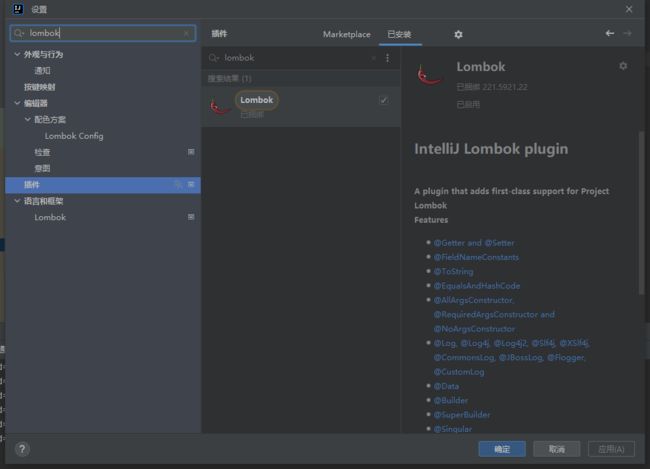
十、Mybatis增删改查(CRUD)
1.删除操作
- SQL语句:
delete from emp where id = 17;
- 接口方法:
@Delete("delete from emp where id = #{id}")
public void delete(Integer id);
- 注意事项:
如果mapper接口方法形参只有一个普通类型的参数,#{…}里面的属性名可以随便写,如:#[id}、#{value}。
2.日志输出
- 可以在application.properties中,打开mybatis的日志,并指定输出到控制台。
#指定mybatis输出日志的位置,输出控制台 mybatis.configuration.log-impl=org.apache.ibatis.logging.stdout.StdOutImpl
3.预编译SQL
参数占位符:
- #{…}
- 执行SQL时,会将#{…}替换为?,生成预编译SQL,会自动设置参数值。
- 使用时机:参数传递,都使用#{…}
- ${…}
- 拼接SQL。直接将参数拼接在SQL语句中,存在SQL注入问题。
- 使用时机:如果对表名、列表进行动态设置时使用。
4.SQL注入
5.新增操作
- SQL语句:
insert into emp(username, name, gender, image, job, entrydate, dept_id, create_time, update_time)
values ('songyuanqiao';'宋远桥',1, '1.jpg',2,2012-10-09',2,2022-10-0110:00:00,2022-10-0110:00:00');
- 接口方法:
@Insert("insert into emp(username, name, gender, image, job, entrydate, dept_id, create time,update _time) "+
"values(#(username),#(name}), #(gender), #(image), #job), #entrydate},#(deptld ), #(createTime), #(updateTime})")
public void insert(Emp emp);
6.新增主键返回
- 描述:在数据添加成功后,需要获取插入数据库数据的主键。
- 实现:
@Options(keyProperty = "id", useGeneratedKeys = true) //会自动将生成的主键值,赋值给emp对象的id属性 @Insert("insert into emp(username, name, gender, image , job, entrydate, dept_id, create_time, update_time) " + "values(#(username), #(name}), #(gender}, #(image}, #[job), #(entrydate}),#(deptld), #(createTime}),#(updateTime)") public void insert(Emp emp);
7.更新操作
- SQL语句(根据ID更新员工信息):
update emp set username = 'songdaxia' , name = '宋大侠', gender = 1 , image = '7.jpg' , job =2, entrydate = '2012-01-01', dept_id =2, update_time = '2022-10-0112:12:12' where id = 19;
- 接口方法:
@Update("update emp set username=#{username}, name=#{name}, gender=#{gender}, image=#{image}, job=#{job},entrydate=#{entrydate}, dept_id=#{deptld} , update_time=#{updateTime} where id=#{id}") public void update(Emp emp);
8.查询操作(根据ID查询)
- SQL语句:
select * from emp where id = 19;
- 接口方法:
@select("select * from emp where id = #{id}") public Emp getByld(Integer id);
9.数据封装
- 实体类属性名和数据库表查询返回的字段名一致,mybatis会自动封装。
- 如果实体类属性名和数据库表查询返回的字段名不一致,不能自动封装。
10.查询操作(where条件查询)
- SQL语句:
select * from emp where name like '%张%' and gender=1 and entrydate between '2010-01-01' and '2020-01-01 ' order by update_time desc;
- 接口方法:
@Select("select * from emp where name like '%$:{name}%' and gender = #{gender} and entrydate between #{begin} and #{end} order byupdate_time desc")
public List<Emp> list(String name, Short gender , LocalDate begin , LocaiDate end);
十一、XML映射文件
1.XML映射文件规范
-
XML映射文件的namespace属性为Mapper接口全限定名一致。
2.MybatisX
使用Mybatis的注解,主要是来完成一些简单的增删改查功能。如果需要实现复杂的SQL功能,建议使用XML来配置映射语句。
官方文档:https://mybatis.net.cn/
十一、动态SQL
随着用户的输入或外部条件的变化而变化的SQL语句,我们称为动态SQL。
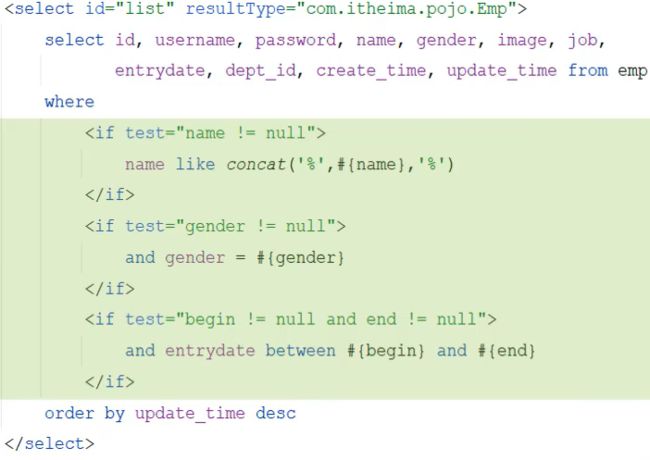
1.

2.

3.
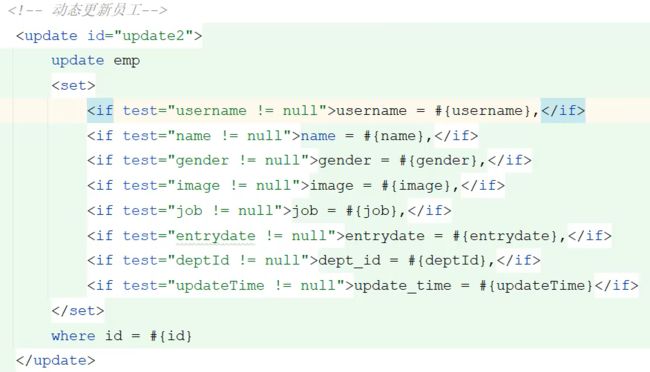
4.
- SQL语句
delete from emp where id in (1,2,3);
- 接口方法
//批量删除
public void deleteBylds(List<Integer> ids);
- XML映射文件
<delete id="deleteBylds">
delete from emp where id in
<foreach collection="ids" item="id" separator="," open="(" close=")">
#{id}
foreach>
delete>
-
属性
- collection:集合名称
- item:集合遍历出来的元素/项
- separator:每一次遍历使用的分隔符
- open:遍历开始前拼接的片段
- close:遍历结束后拼接的片段
5.





